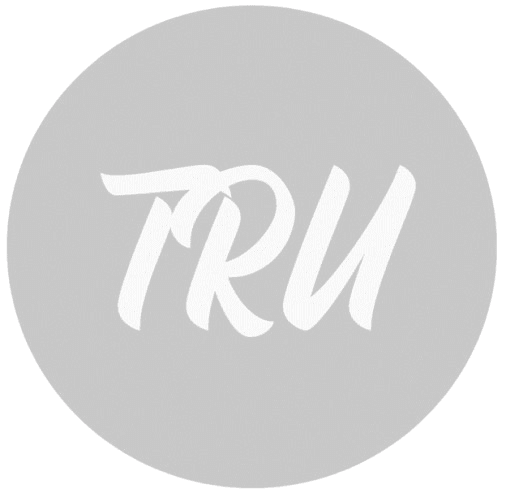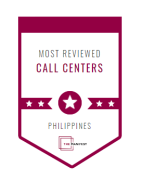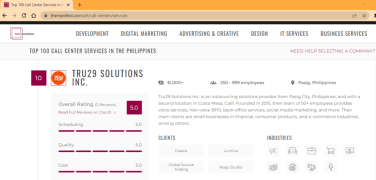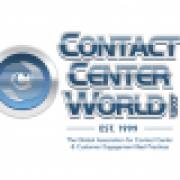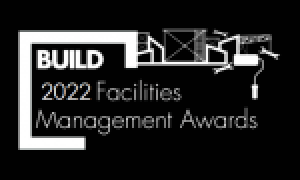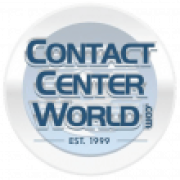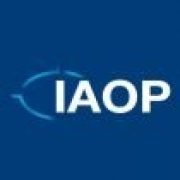

Outsourcing Glossary & Terms
Home > Resources
Terminologies used in the outsourcing industry has evvoled drastically in the last decade and if yu’re new to all of this then perhaps this page will be of help.
Terminology
Definition / Description
| Abandoned Call | Also called a Lost Call. The caller hangs up before reaching an agent. |
| After-Call Work (ACW) | Also called Wrap-up and Post Call Processing (PCP). Work that is necessitated by and immediately follows an inbound transaction. Often includes entering data, filling out forms and making outbound calls necessary to complete the transaction. The agent is unavailable to receive another inbound call while in this mode. |
| Auto-Available | An ACD feature whereby the ACD is programmed to automatically put agents into Available after they finish Talk Time and disconnect calls. If they need to go into After-Call Work, they have to manually put themselves there. See Auto Wrap-up. |
| Automatic Call Distributor | The specialized telephone system used in incoming call centers. It is a programmable device that automatically answers calls, queues calls, distributes calls to agents, plays delay announcements to callers and provides real-time and historical reports on these activities. May be a stand-alone system, or ACD capability built into a CO, network or PBX. |
| Automatic Number Identification (ANI) | A telephone network feature that passes the number of the phone the caller is using to the call center, real-time. ANI may arrive over the D channel of an ISDN PRI circuit (out of band signaling), or before the first ring on a single line (inband signaling). ANI is delivered from long distance companies. Caller ID is the local phone company version of ANI, and is delivered inband. ANI is a North American term, and Calling Line Identification (CLI) is an alternative term used elsewhere. |
| AUX or Agent Status | The mode an agent is in (Talk Time, After-Call Work, Unavailable, Lunch, Short Break, Meeting, Training, etc.) |
| Available Time | The total time that an agent or agent group waited for calls to arrive, for a given time period. |
| Average Handling Time (AHT) | is the average duration of the entire customer call transaction, from the time the customer initiates the call to ending the call, including all hold times and transfers, as well as after call work |
| Back Office | In outsourcing, provided services are normally broken down into back office and front office. Back office services are internal business functions and typically include human resources, finance and accounting, or as simple as data entry, document processing, etc. |
| Benchmark | Historically, a term referred to as a standardized task to test the capabilities of devices against each other. In quality terms, benchmarking is comparing products, services and processes with those of other organizations, to identify new ideas and improvement opportunities. |
| Business Process Outsourcing (BPO) | A subset of outsourcing in which a company contracts the operations and responsibilities of a specific business process to a third-party service provider. |
| Call Blending | Call Blending or sometimes called “Blended Support” is a strategy of combining traditionally separate inbound and outbound call center agent groups into one group of agents responsible for handling both inbound and outbound contacts. A system that is capable of call blending automatically puts agents who are making outbound calls into the inbound mode and vice versa, as necessitated by the incoming call load. |
| Calls in Queue | A real-time report that refers to the number of calls received by the ACD system but not yet connected to an agent. |
| Chat Support | Chat support is a common method of customer service or support that offers assistance to customers through the use of a messaging app or online chatbot. Delivered by live agents or through artificial intelligence (AI), chat support supplements more traditional customer service channels, such as voice or email. When facilitated by live agents, chat support offers customers the opportunity to receive responses in real time, while maintaining human connection and empathy. |
| Contact or Call Center Outsourcing (CCO) | The best-known form of outsourcing, where brands contract traditional contact center functions like voice, chat, and social media-based customer service to an outside service provider. |
| Continuous Improvement | The ongoing improvement of processes. |
| Customer Experience (CX) | The entire set of interactions between an organization and its customer throughout the duration of their relationship, before purchase and throughout every touchpoint. |
| Customer Service | Often synonymous with customer support, customer service is when workers assist and advise customers of a particular company across a variety of channels, including voice, email, chat, SMS and self-service. Customer service most often includes assisting customers in troubleshooting problems with a product, paying bills, buying, exchanging or returning a product, etc. |
| Digital Experience (DX) | The interaction between customer and brand as made possible by technology. |
| Disposition | The outcome of a call normally attributed to outbound calls although utilized in some inbound call center processes as well. |
| Front Office | Front office services are characterized by their direct interaction with customers in departments such as customer service, sales, marketing and technical support. |
| Full Time Equivalent (FTE) | A term used in scheduling and budgeting, whereby the number of scheduled hours is divided by the hours in a full work week. The hours of several part time agents may add up to one FTE. Example… two staff are working 4 hours each would count as 1 FTE only as the fulltiem work hoursis 8 hours per day. |
| Information Technology Outsourcing (ITO) | A technical subset of outsourcing that involves the contracting of traditional IT services like networking and programming to a third-party service provider. |
| Knowledge Process Outsourcing (KPO) | A form of outsourcing where companies contract with a third-party provider on high-value services such as research and information gathering, legal and medical services, training, consultancy, scientific research and development, animation and design, etc. |
| Legal Process Outsourcing (LPO) | Used by firms to complete legal services, often of the relatively low-value or labor-intensive variety. |
| Multichannel Customer Support | Multichannel customer support means that a company offers their customers support or service through more than one distinct channel. Those channels may or may not be integrated or consistent in terms of quality of service or messaging. Examples of a channel is via a customer inquiry via phone call, chat or email. |
| Murphy’s Law | If anything can go wrong, it will. Not a good perspective to live by, but worth considering when designing agent groups, routing configurations and disaster recovery plans. |
| Nearshore | When a third-party vendor performs services in a country that is geographically near to the hiring company’s home country. For instance, if a U.S.-based company outsources back office operations to Mexico or Central America, then the arrangement is called “nearshoring." |
| Net Promoter Score (NPS) | Net Promoter Score or more propularly known as NPS is a common customer service metric that is used to gauge a customer’s experience with a product or service. NPS is derived from the results of customer surveys, which are often conducted after a customer service interaction takes place. In these surveys, customers are asked to indicate on a scale of 0–10 how likely they are to recommend a company to someone else, which provides insight into both customer experience and potential business growth. |
| Occupancy | Also referred to as agent utilization. The percentage of time agents handle calls versus wait for calls to arrive. For a half-hour, the calculation is: (call volume x average handling time in seconds) / (number of agents x 1800 seconds). |
| Offerred Calls | All of the attempts callers make to reach the call center. There are three possibilities for offered calls: 1) they can get busy signals, 2) they can be answered by the system, but hang up before reaching a rep, 3) they can be answered by a rep. Offered call reports in ACDs usually refer only to the calls that the system receives. |
| Offshore | When a third-party service provider performs duties in a country not bordering or near the country where the contracting company maintains its primary business operations. For instance, if a U.S.-based company outsources IT services to Philippines, then that arrangement is called “offshoring.” |
| Omnichannel Customer Support | The ability to engage customers across multiple contact channels, while ensuring intelligent and seamless integration of information across those channels. More importantly, it hinges on delivering a consistent customer experience regardless of the number and choice of channels. |
| Onshore | PCI (payment card industry) compliance most often represents a company’s level of adherence to the institution-specific security guidelines required to process and complete most credit or debit card transactions. Sometimes referred to as the Payment Card Industry Data Security Standard (PCI DSS), these guidelines help ensure that credit card data is always handled on secure networks to prevent data breaches.To obtain PCI compliance status, companies must follow all of the security guidelines provided to businesses by each major credit card or banking company individually, then submit to a cardholder data environment review or “scope” by the PCI Security Standards Council (PCI SSC).The PCI compliance status of a company is a direct reflection of how safe a business keeps private financial data throughout each digital transaction — and a promise to customers that they are in good hands when they do business with that company. Maintaining PCI compliance not only adds to the legitimacy of a business, it also mitigates the risk of extremely harmful data leaks or breaches for a company and its customers. As more and more transactions have migrated to the digital space, PCI compliance can be an exceptionally useful way to reassure consumers that they’re always making a safe, smart decision by entrusting a specific company with their business. |
| Private Branch Exchange | A telephone system located at a customer’s site that handles incoming and outgoing calls. ACD software can provide PBXs with ACD functionality. Also called private automatic branch exchange (PABX). |
| Queue | Holds callers until an agent becomes available. Queue can also refer to a line or list of items in a system waiting to be processed (e.g., e-mail messages). |
| Real Time Management | Making adjustments to staffing and thresholds in the systems and network, in response to current queue conditions. |
| Rostered Staff Factor (RSF, propularly known as Shrinkage) | Alternatively called an Overlay, Shrink Factor or Shrinkage. RSF is a numerical factor that leads to the minimum staff needed on schedule over and above base staff required to achieve your service level and response time objectives. It is calculated after base staffing is determined and before schedules are organized, and accounts for things like breaks, absenteeism and ongoing training. |
| Schedule Adherence | A general term that refers to how well agents adhere to their schedules. Can include both a) how much time they were available to take calls during their shifts, including the time spent handling calls and the time spent waiting for calls to arrive (also called Availability), and b) when they were available to take calls (also called Compliance or Adherence). |
| Service Level (SL) | Also called Telephone Service Factor, or TSF. The percentage of incoming calls that are answered within a specified threshold: “X% of calls answered in Y seconds.” |
| Service Level Agreement (SLA) | Performance objectives reached by consensus between the user and the provider of a service, or between an outsourcer and an organization. A service level agreement specifies a variety of performance standards that may or may not include “service level. |
| Supervisor (sometimes known as Team Leader, TL, Team Lead, Coach) | The person who has front-line responsibility for a group of call center agents. Typical ratios are one supervisor to every 10-15 agents. However, help desks can have one supervisor for every 5 people, and some reservations centers have one supervisor for every 30 or 40 agents. Generally, supervisors are equipped with special telephones and computer terminals that enable them to monitor agent activities. |
| Talk Time (TT) | the amount of time a phone agent talks to a customer during an interaction as measured by the automatic call distributor (ACD) |
| Toll Free Service | Enables callers to reach a call center out of the local calling area without incurring charges. 800 and 888 service is toll-free. In some countries, there are also other variations of toll-free service. For example, with 0345 or 0645 services in the United Kingdom, callers are charged local rates and the call center pays for the long distance charges. |
| Trunk | Also called a Line, Exchange Line or Circuit. A telephone circuit linking two switching systems. |
| Trunk Group | A collection of trunks associated with a single peripheral and usually used for a common purpose. |

We’re more than glad to sit down and truly understand your business needs. Contact our Business Development Team now.


